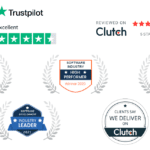As a product owner, setting performance goals is crucial for effectively managing resources and achieving success in your role. By establishing clear objectives, you can prioritize tasks and ensure that your efforts align with the overall product strategy. Setting performance goals also helps you improve team efficiency and enhance the value of the products you deliver. To develop practical and actionable goals, it’s essential to utilize the SMART framework.
The SMART Framework for Goal Setting

The SMART framework is a powerful tool that allows product owners to set specific, measurable, attainable, relevant, and time-based goals. By following this framework, product owners can develop practical goals that are more likely to lead to success and drive positive outcomes for their teams and products.
Specificity is a key component of the SMART framework. Product owners need to clearly define what they want to achieve and provide specific details about their goals. For example, instead of setting a general goal of “improving communication skills,” a more specific goal would be “enhancing written communication skills through weekly practice exercises and receiving feedback from team members.”
Measurability is another important aspect of goal setting. Product owners should establish metrics or indicators that can be used to track progress and measure the success of their goals. This could involve setting targets for specific key performance indicators (KPIs) or using data-driven metrics to assess the impact of their actions.
“A goal without a plan is just a wish.”
To ensure that goals are achievable, product owners need to assess the available resources, skills, and time required to accomplish them. It’s important to strike a balance between setting ambitions goals and ensuring they are realistic and attainable within the given constraints.
Relevance is a crucial factor when setting goals. Product owners should align their goals with the overall objectives and strategy of the organization. This ensures that their efforts contribute to the broader vision and mission, ultimately driving value for both the team and the product.
Lastly, time-based goals provide a framework for setting deadlines and establishing a sense of urgency. By setting specific timelines for achieving goals, product owners can prioritize tasks effectively, manage resources efficiently, and maintain a focused approach towards goal attainment.
Examples of SMART Goals for Product Owners
Setting performance goals using the SMART framework can help product owners drive success in their role. Here are some practical examples of SMART goals that product owners can set to improve team efficiency, enhance product value, and meet customer needs:
1. Develop a Minimum Viable Product within a Specific Timeline:
Goal: Launch a Minimum Viable Product (MVP) within six months, incorporating essential features and functionalities.
2. Improve Communication Skills:
Goal: Enhance written and verbal communication skills through regular training and practice, ensuring clear and effective communication with stakeholders and team members.
3. Enhance Product Quality:
Goal: Reduce the number of reported bugs by 25% within the next quarter, focusing on improving code quality, conducting thorough testing, and implementing rigorous quality assurance processes.
4. Launch New Features to Enhance User Experience:
Goal: Introduce three new features based on user feedback and market research within the next release cycle to enhance the overall user experience and meet customer expectations.
5. Monitor Competitor Performance:
Goal: Conduct a competitor analysis quarterly, focusing on key competitors in the market and identifying opportunities for product improvement, differentiation, and market positioning.
6. Redesign Product Pages for Improved Conversion:
Goal: Collaborate with the design and development teams to revamp product pages, optimizing them for better user engagement, increased conversion rates, and improved overall customer satisfaction.
By setting these SMART goals, product owners can align their efforts with organizational objectives, drive innovation, and deliver valuable products that meet customer needs. It is important to regularly review and evaluate these goals through anonymous surveys or feedback sessions to ensure continuous improvement and adaptability in an ever-changing market.
| SMART Component | Goal Example |
|---|---|
| Specific | Develop a Minimum Viable Product within six months. |
| Measurable | Reduce reported bugs by 25% within the next quarter. |
| Attainable | Launch three new features based on user feedback. |
| Relevant | Conduct a competitor analysis quarterly. |
| Time-based | Revamp product pages within the next release cycle. |
Prioritizing Customer Needs

Understanding and prioritizing customer needs is essential for product owners, and setting goals in this area can significantly impact the success of product development. By aligning their goals with customer needs, product owners can ensure that the products they deliver meet the expectations of their target audience.
One goal that product owners can set is to gather customer feedback on a regular basis. This can be done through surveys, interviews, or focus groups. By listening to their customers, product owners can gain valuable insights that can inform the development of new features or enhancements to existing products.
Another goal related to customer needs is improving customer satisfaction. Product owners can set targets for increasing customer satisfaction scores or reducing customer complaints. This can be achieved by addressing customer pain points, improving the user experience, or providing better customer support.
Lastly, product owners can set goals to ensure timely delivery of products to customers. This includes setting targets for reducing development cycle times, streamlining processes, and improving collaboration between product teams and other stakeholders. By focusing on efficiency and timeliness, product owners can enhance customer satisfaction and gain a competitive edge in the market.
Table 1: Examples of Customer Needs Goals
| Goal | Measurement |
|---|---|
| Increase customer satisfaction | Target: Improve customer satisfaction scores by 10% within 6 months |
| Gather customer feedback | Target: Conduct customer surveys quarterly and collect feedback from at least 500 customers per quarter |
| Reduce development cycle times | Target: Decrease the time-to-market for new products by 20% within 1 year |
Setting and achieving goals related to customer needs not only demonstrates a customer-centric approach but also contributes to the overall success of the product and the organization. By understanding and prioritizing customer needs, product owners can ensure that their products meet the expectations of their target audience and drive business growth.
Improving Team Collaboration

Effective team collaboration is a key responsibility of product owners, and setting goals in this area can foster greater efficiency and productivity. By establishing clear objectives for teamwork, product owners can ensure that their teams work cohesively towards common goals, resulting in smoother workflows and improved delivery times.
One way to enhance team collaboration is by encouraging open and transparent communication. Product owners can set goals for regular team meetings, where members can discuss progress, share ideas, and address any challenges or roadblocks. This fosters a culture of collaboration and allows for timely problem-solving, ultimately improving overall efficiency and ensuring that everyone is on the same page.
Additionally, product owners can promote cross-functional collaboration by setting goals that require different teams to work together towards a common objective. This encourages knowledge sharing, integration of skills, and a holistic approach to problem-solving. By breaking down silos and fostering collaboration between teams, product owners can streamline processes and reduce duplication of efforts, resulting in faster turnaround times and improved delivery of products or services.
| Goals for Improving Team Collaboration |
|---|
| Regular team meetings to discuss progress and address challenges |
| Promoting cross-functional collaboration for integrated problem-solving |
| Encouraging open and transparent communication channels |
By setting goals that focus on team collaboration, product owners can create a work environment that nurtures effective communication, cooperation, and efficient workflows. This not only improves delivery times but also enhances the overall quality of the product or service being developed, ultimately leading to increased customer satisfaction and business success.
Leveraging Automation Technologies
Automation technologies have the potential to streamline product development, and product owners can set goals to leverage these technologies and reduce development cycle times. By integrating automation tools and processes, product owners can improve efficiency, eliminate manual errors, and accelerate time-to-market. Here are some ways product owners can set SMART goals to maximize the benefits of automation technologies:
- Implement automated testing: By setting a goal to implement automated testing frameworks, product owners can ensure comprehensive and efficient testing of their products. This not only reduces the time required for manual testing but also improves product quality and reliability.
- Automate repetitive tasks: Product owners can set goals to automate repetitive tasks such as code deployment, data analysis, and reporting. This frees up valuable time for product owners and their teams to focus on more strategic and innovative initiatives.
- Integrate continuous integration and deployment: By setting goals to integrate continuous integration and deployment tools, product owners can streamline the software development process. This allows for faster and more frequent releases, reducing cycle times and enabling the rapid delivery of new features and bug fixes.
Benefits of Automation Technologies
Automation technologies offer several benefits for product owners:
- Increased productivity: Automation reduces the need for manual, repetitive tasks, enabling product owners to accomplish more in less time.
- Improved accuracy: Automated processes eliminate human errors and inconsistencies, ensuring more accurate and reliable results.
- Enhanced scalability: Automation allows product owners to scale their operations without a proportional increase in resources, enabling them to handle larger workloads efficiently.
- Faster time-to-market: By reducing development cycle times, automation technologies enable product owners to release new features and updates more quickly, gaining a competitive edge in the marketplace.
Overall, product owners should set goals to leverage automation technologies and harness their potential to streamline product development, improve efficiency, and reduce cycle times. By adopting automation tools and processes, product owners can enhance their productivity, accuracy, scalability, and time-to-market, ultimately driving success for their products and businesses.
| Automation Technology | Benefits |
|---|---|
| Automated Testing | Improved product quality, faster testing cycles |
| Task Automation | Time savings, increased focus on strategic initiatives |
| Continuous Integration and Deployment | Accelerated time-to-market, rapid delivery of new features |
Conducting Market Research

Conducting thorough market research is a valuable goal for product owners as it helps them gain insights into customer needs and market trends. By gathering relevant data and analyzing market conditions, product owners can make informed decisions and develop strategies to meet customer expectations. A comprehensive market research plan includes competitor analysis, customer surveys, and trend analysis to identify opportunities for product improvement and innovation.
One effective method of conducting market research is by using competitive analysis to evaluate competitor performance and identify gaps in the market. This analysis allows product owners to understand their position in the industry and identify areas for differentiation. By studying competitors’ strengths and weaknesses, product owners can develop strategies to position their products more effectively and take advantage of market opportunities.
Customer surveys and feedback play a crucial role in understanding customer needs and preferences. By engaging directly with customers, product owners can gather valuable insights that inform product development and enhance the overall customer experience. Surveys, focus groups, and interviews are effective tools for collecting feedback and understanding customer pain points, allowing product owners to align their goals with customer expectations.
Benefits of Market Research for Product Owners:
- Identify customer needs and market trends
- Understand competitor performance and market positioning
- Inform product development and innovation
- Enhance the overall customer experience
- Align goals with customer expectations
Market Research Table:
| Market Research Methods | Description |
|---|---|
| Competitive Analysis | Evaluating competitor performance and identifying market gaps. |
| Customer Surveys | Gathering customer feedback to understand needs and preferences. |
| Trend Analysis | Studying market trends to identify opportunities for product improvement and innovation. |
| Focus Groups | Engaging with a small group of customers to gather in-depth insights. |
“Market research is not just essential; it is a critical success factor for product owners. By investing time and resources into understanding customer needs and market dynamics, product owners can stay ahead of the competition and deliver products that truly resonate with their target audience.”
Conducting market research is an important goal for product owners as it provides valuable insights into customer needs and market trends. By utilizing competitive analysis, customer surveys, and trend analysis, product owners can develop strategies that align with customer expectations and enhance the overall customer experience. Through thorough market research, product owners can make informed decisions and drive product success.
Evaluating Goals through Team Feedback
Evaluating goals through constructive team feedback is a crucial step for product owners to ensure continued improvement and alignment with team objectives. By actively seeking feedback, product owners can gauge the effectiveness of their goals and make necessary adjustments to drive better outcomes.
A simple and effective way to gather feedback is through anonymous surveys. This allows team members to provide honest feedback without the fear of repercussions. Surveys can be designed to address specific aspects of goal performance, such as clarity, achievability, and relevance. By analyzing the feedback received, product owners can identify areas for improvement and refine their goals accordingly.
A Sample Feedback Survey for Evaluating Goals
Below is an example of a feedback survey that can be used to evaluate the effectiveness of product owners’ goals:
1. Rate the clarity of the goals set by the product owner:
- Very clear
- Clear
- Neutral
- Unclear
- Very unclear
2. Did the goals set by the product owner contribute to the overall success of the project?
- Yes
- No
- Not sure
3. Were the goals achievable within the given timeframe and available resources?
- Yes, easily achievable
- Yes, with some challenges
- No, unrealistic expectations
- Not sure
4. How well did the product owner communicate the goals to the team?
- Excellent communication
- Good communication
- Neutral
- Poor communication
- No communication
5. Please provide any additional comments or suggestions for improving goal setting:
[Open-ended response]
By collecting feedback through surveys like the one above, product owners can gain valuable insights into the perception of their goals and make informed decisions moving forward. Regular evaluation of goals not only fosters a culture of continuous improvement but also helps product owners align their objectives with team expectations.
| Benefits of Evaluating Goals through Team Feedback | Importance of Team Feedback |
|---|---|
| Evaluates goal effectiveness | Ensures goal alignment |
| Identifies areas for improvement | Drives continuous improvement |
| Encourages team collaboration | Fosters transparency and trust |
Agile Leadership and Scrum Goals

Agile leadership is essential for product owners to effectively navigate the ever-evolving landscape of product development, and setting Scrum goals can provide a clear direction for their tasks and responsibilities. Agile leadership emphasizes adaptability, collaboration, and continuous improvement, allowing product owners to respond efficiently to changing customer needs and market dynamics.
The Scrum framework is widely adopted in agile product development, and it provides a structured approach for delivering high-quality products. Setting Scrum goals enables product owners to align their efforts with the core principles of Scrum, such as transparency, inspection, and adaptation. By defining measurable goals that reflect the product vision and stakeholder needs, product owners can guide their teams towards successful product launches and continuous improvement.
When setting Scrum goals, it is important for product owners to consider the specific needs of their teams and the organization. Goals should be aligned with the product strategy and focus on delivering value to the customer. For example, a product owner might set a goal to improve the team’s velocity by implementing agile practices, such as reducing the backlog size and enhancing the sprint planning process. Another goal could be to increase stakeholder satisfaction by regularly incorporating feedback into the product development cycle.
Table 1: Examples of Scrum Goals for Product Owners
| Goal | Description |
|---|---|
| Increase team velocity | Implement agile practices to improve productivity and efficiency |
| Enhance stakeholder satisfaction | Incorporate feedback into the product development cycle to meet stakeholder expectations |
| Reduce time to market | Streamline product development processes to accelerate product delivery |
| Improve cross-functional collaboration | Foster effective communication and collaboration among team members |
By setting clear goals and regularly evaluating progress, product owners can drive the success of agile product development initiatives. Agile leadership combined with Scrum goals empowers product owners to lead their teams in delivering innovative and customer-centric products that create value for both the organization and its customers.
Product Strategy Objectives
Developing and executing product strategy objectives is a critical goal for product owners, and setting team leadership benchmarks can help them measure progress and achievement. Product strategy objectives provide a clear direction for the product development process and guide the decision-making process. By defining specific objectives, product owners can align their team’s efforts and resources towards achieving these goals.
One of the key aspects of product strategy objectives is the identification of target markets and customer segments. By understanding the needs, preferences, and pain points of these target customers, product owners can develop a strategy that addresses their specific requirements.
This involves conducting market research to gather data and insights on customer behavior, competitor analysis, and industry trends. The gathered information can then be used to define product features, pricing strategies, and marketing initiatives that resonate with the target audience.
In addition to identifying target markets, product owners should also establish clear objectives related to team leadership. This includes setting benchmarks for effective collaboration, communication, and decision-making within the team.
By fostering a culture of leadership and accountability, product owners can empower their team members to take ownership of their roles and contribute to the overall success of the product. These benchmarks can be measured through key performance indicators (KPIs) such as team satisfaction, productivity, and customer satisfaction.
| Benefits of Setting Team Leadership Benchmarks | Measured Through |
|---|---|
| Improved team collaboration and communication | Team satisfaction surveys, feedback sessions |
| Enhanced decision-making processes | Speed and accuracy of decision-making |
| Increased accountability and ownership | Individual performance evaluations, project outcomes |
| Higher levels of team productivity | Efficiency and output metrics |
| Positive impact on customer satisfaction | Customer feedback, ratings, and reviews |
By setting product strategy objectives and team leadership benchmarks, product owners can effectively guide their team towards success. Regular evaluation and review of these objectives and benchmarks allow for adjustments to be made as needed, ensuring that the product development process remains aligned with the overall business goals.
Wrapping up
Setting performance goals for product owners is a vital step in enhancing team efficiency and delivering valuable products. Empower your role as a product owner by defining clear, achievable goals. By utilizing the SMART framework, you can develop practical goals that are specific, measurable, attainable, relevant, and time-based.
External Sources
https://successindepth.com/smart-goals-for-product-owners/
https://managebetter.com/blog/product-manager-performance-goal-examples












